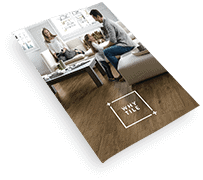Designing, renovating, or redecorating your kitchen? Transitional design may be just what you’re looking for.
The transitional kitchen is the perfect blend of older and more modern styles and offers endless room for design creativity and flexibility. Our guide to creating a transitional kitchen gives you all the intel to decide if this style is for you and how to implement it in your home.
What Is Transitional Design?
As the name suggests, transitional design is a transition or middle ground between two different interior decor styles: traditional and contemporary. Furniture, fabrics, materials, and finishes from both styles come together to create a space that’s timeless.
The popularity of transitional design lies in the fact that you get to break the rules when designing your space — or rather, there aren’t any rules to begin with. Transitional design features certain signature elements but unlike more strictly defined decor styles, you don’t have to follow specific guidelines to achieve the desired look. Instead, you can mix and match your favorite elements from traditional and contemporary styles to create a space that’s representative of your personal aesthetic.
The result of transitional design is often more playful than either traditional or contemporary alone, possibly even more adventuresome. Rather than conforming to a preexisting style, you can put all your creativity on display. The versatility of transitional design also makes it suitable for any style of home, from Bungalow to Victorian. You don’t enjoy this same level of flexibility with most other interior decor styles—another reason for transitional design’s rising popularity.
[Related: Increase the Resale Value of Your Home by Focusing on Just These Two Rooms]
Elements of a Transitional Kitchen
Applying transitional design to your kitchen is as simple as incorporating a few basic principles.
Combination of Styles
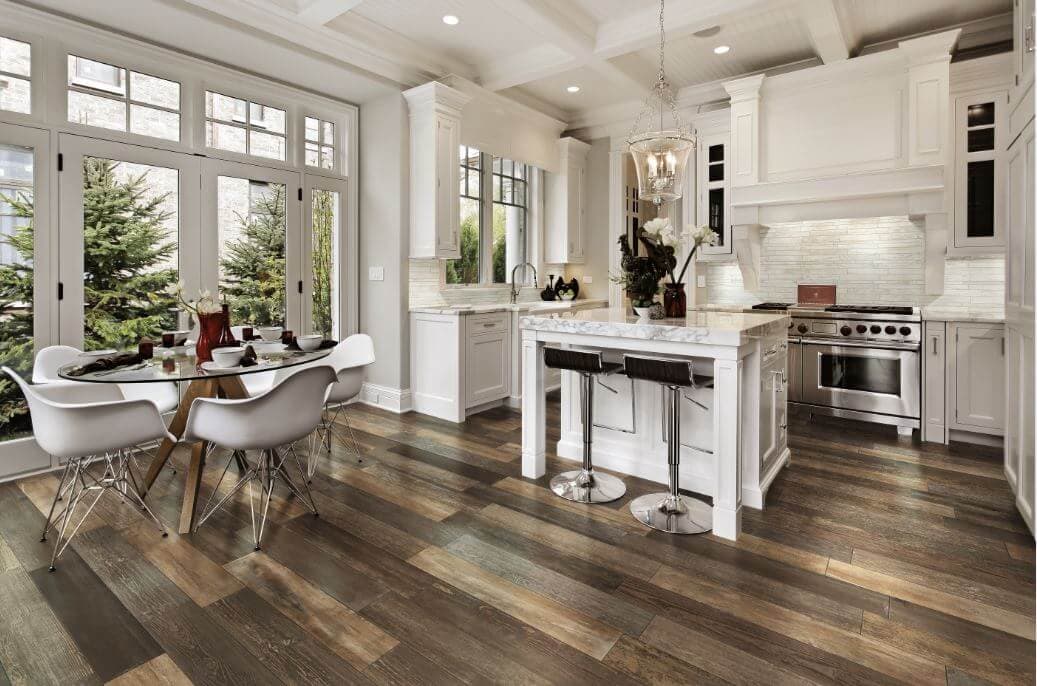
The most important element of a transitional kitchen is the combination of styles, such as the traditional cabinetry in the above image paired with midcentury furnishings, contemporary appliances, and timeless wood-look ceramic tile flooring. Ideally, your kitchen will feature a mix that reflects your personal style.
Creating modern twists on traditional looks is also effective. For example, the kitchen above uses white marble-look ceramic panels/slabs to create the countertops and island surface and also incorporates narrow mosaic marble-look tile as a textured backsplash.
It’s up to you whether you create a primarily traditional kitchen injected with elements of contemporary design, a contemporary kitchen with traditional notes, or an equal blend of the two!
Mix of Natural and Man-Made Materials
Transitional kitchens embrace a mix of various materials, with an emphasis on combining looks from nature and manufactured materials. Think wood, stone, metal, glass, ceramic tile, and even concrete.
When choosing which of these materials to include in your kitchen, consider carefully each style and function; choosing too many different styles could be visually overwhelming and detract from efficiency. For example, wood textures are key in transitional kitchens, but wood flooring in a room with high exposure to water could lead to damaged flooring and extra cleaning and maintenance.
Ceramic tile makes choosing materials for your kitchen easy. Tile is available in a wide selection of colors, shapes, textures, and styles, including wood, marble, and concrete looks. Ceramic tile also offers a multitude of kitchen-friendly benefits, such as water-, fire-, stain-, scratch-, and bacteria-resistance!
Ceramic tile’s versatile style and low-maintenance benefits mean that you can use tile for any of your kitchen surfaces. Transitional design encourages you to think a little differently, so you may use traditional materials in unexpected places, such as designing a wood-look ceramic tile backsplash instead of using a wood look with your flooring.
[Related: Using Inexpensive Materials to Create a Rich Look]
Neutral Color Scheme
Neutral color schemes help make transitional kitchens look timeless. Shades of white, cream, brown, gray, and black transcend color trends, and black and white transitional kitchen palettes are common, as these colors work well with both traditional and contemporary designs.
Single-color preferences can also work in transitional decor, and many homeowners opt for all-white kitchens. Be sure to use various textures to create visual interest if you go this route (more on textures next).
Whatever your palette, include pops of color in your kitchen. Stick to a small area for bold accents and choose a nontraditional color to modernize your space. For example, you may choose blue for your island countertop. (Because the exact color blue granite you want may be difficult to find or expensive, ceramic slab countertops are an excellent alternative.)
Blend of Different Textures and Finishes
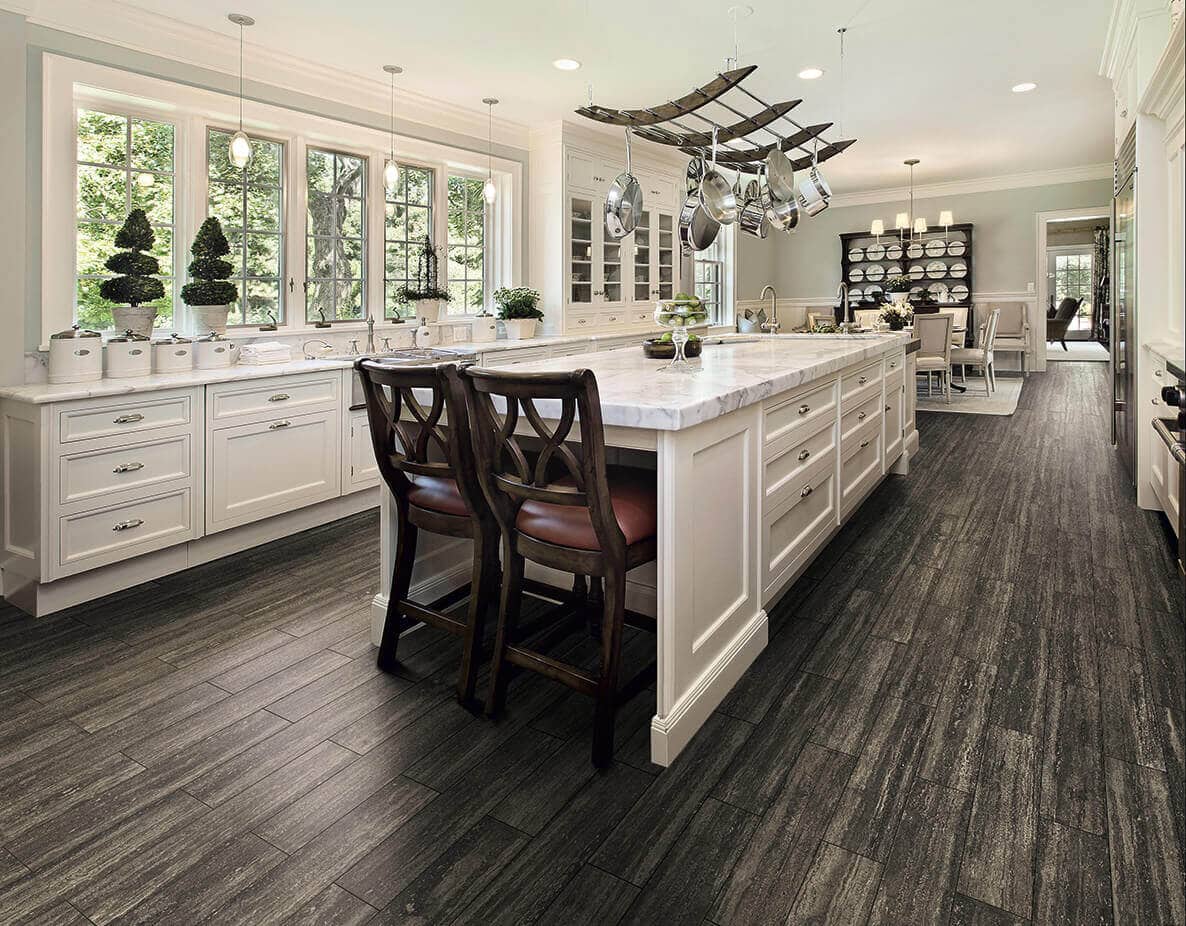
While you’ll want to go simpler with color choices in your transitional kitchen, the opposite is true for textures and finishes. A transitional kitchen is a visually rich space, made so by the blended textures of different materials. Single-color kitchens rely on different textures to differentiate areas and surfaces.
Ceramic tile comes in a wide range of finishes and textures (not to mention three-dimensional options), so finding the right combination of looks for your transitional kitchen is easy. Try to include both polished and matte finishes and rough and smooth textures for maximum visual interest.
Clean Lines
Clean, practical, and geometric lines create an uncluttered look in transitional kitchens.
Avoid rounded countertops and curves or intricate carvings in your crown molding, cabinetry, barstools, and other crafted pieces. Your cabinets, especially, should be low-profile — they don’t need to steal the show.
Transitional Kitchen Design Inspiration
Be inspired by some of our favorite transitional kitchen designs.
Shaker Cabinets
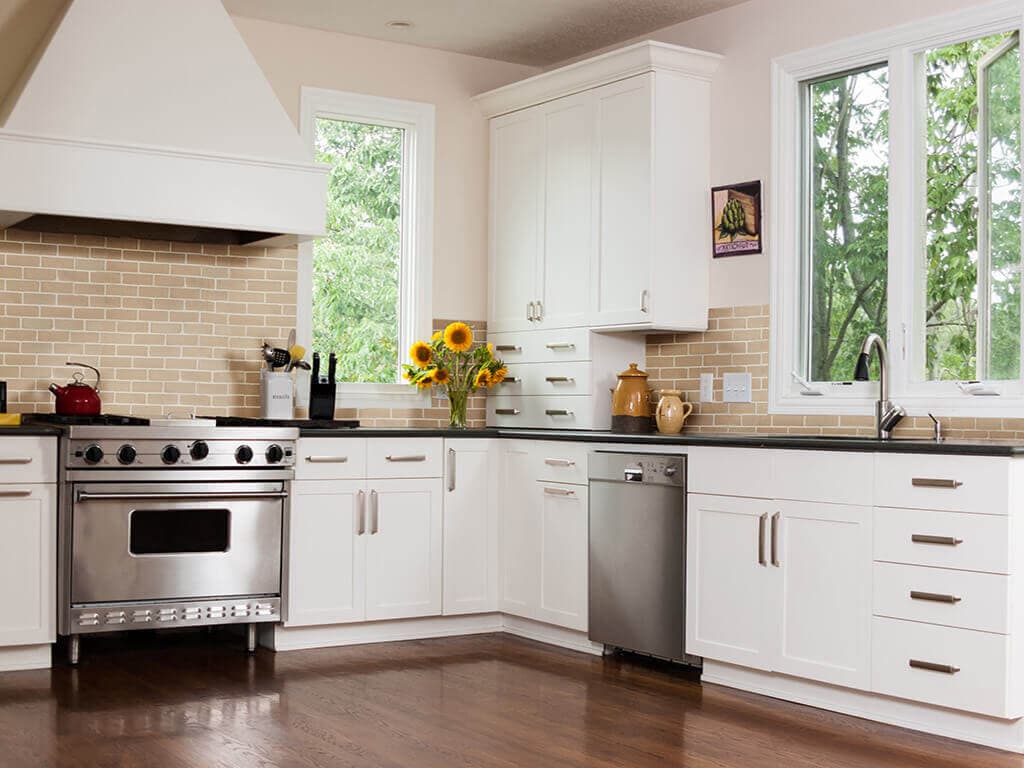
You’ll find Shaker-style cabinets in many transitional kitchens because of how well they balance traditional and contemporary design. Shaker cabinet doors and drawers generally have raised flat borders surrounding a flat panel in the middle and no curved molding. The raised borders add some interest to what would otherwise be completely flat fronts, while still maintaining clean, uncluttered lines.
Original Shaker cabinets (those constructed by the Shakers) were wood-toned, but shaker styles in crisp colors strike a nice balance between old and new.
Concrete
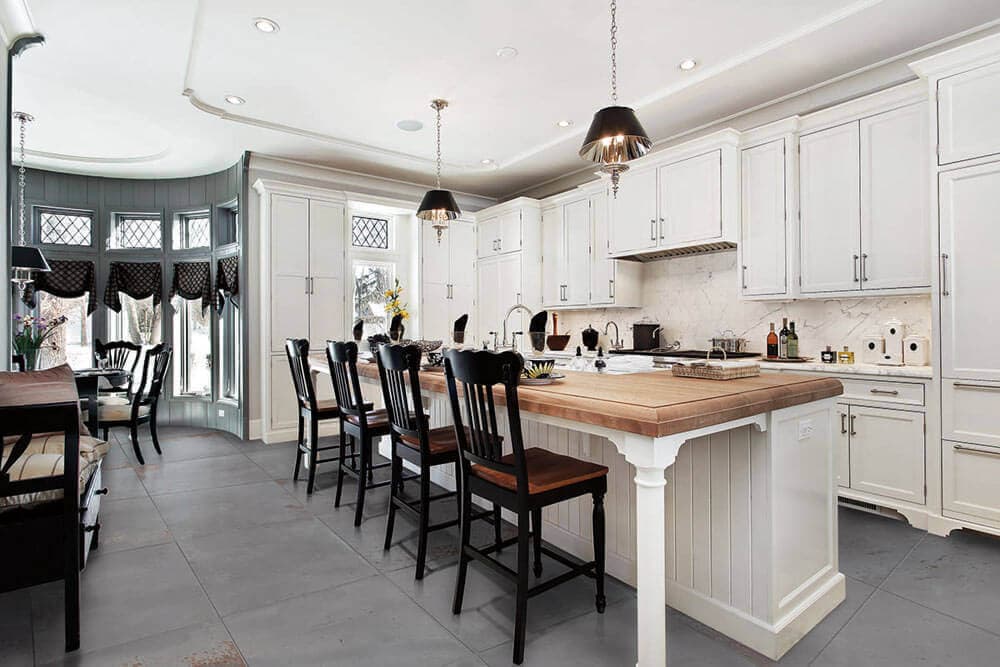
Concrete-look flooring and countertops are often seen in transitional kitchens — the industrial vibe of variegated color and texture provides a contemporary option that modernizes more traditional-looking decor.
Concrete may require extra maintenance to continue looking its best. Concrete-look ceramic tile is an alternative to achieve the same look without the same type of extra maintenance (just wipe with clean water), and can be used on any of your kitchen surfaces.
[Related: The Complete Guide to Kitchen Flooring]
Stainless Steel
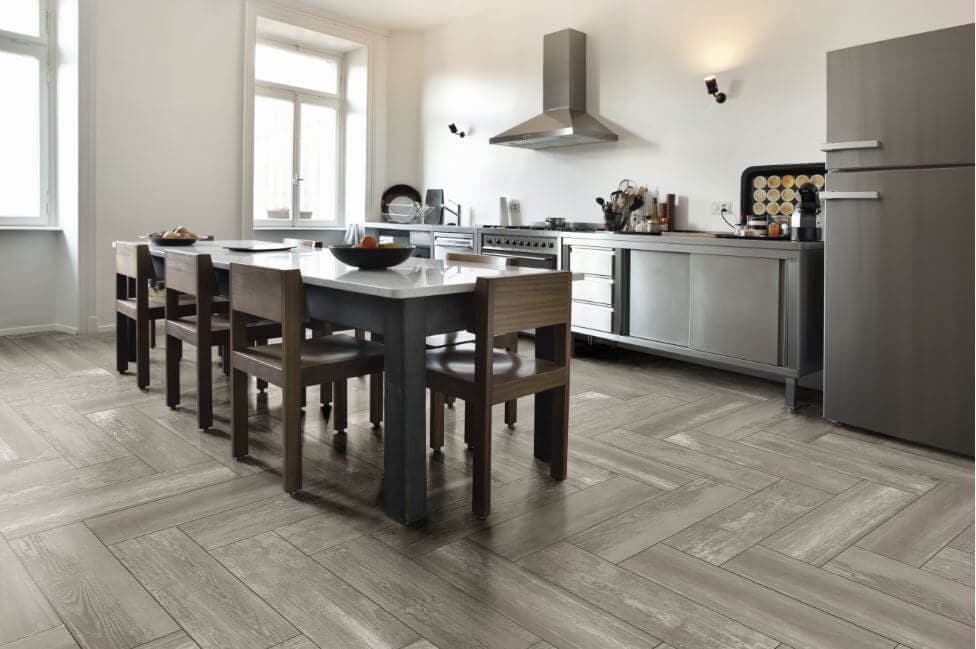
Crisp stainless steel contrasts beautifully with the natural look of stone and wood and is an excellent way to balance the traditional and contemporary elements in your transitional kitchen.
Incorporate stainless steel appliances in your transitional kitchen or go all out and use stainless steel cabinetry as you see in the kitchen above. You can also use stainless steel accents, such as light fixtures or cabinet hardware. The goal is to mix textures — you can even incorporate metal-look ceramic tile for a unique backsplash or countertop.
Subway Tile Backsplash
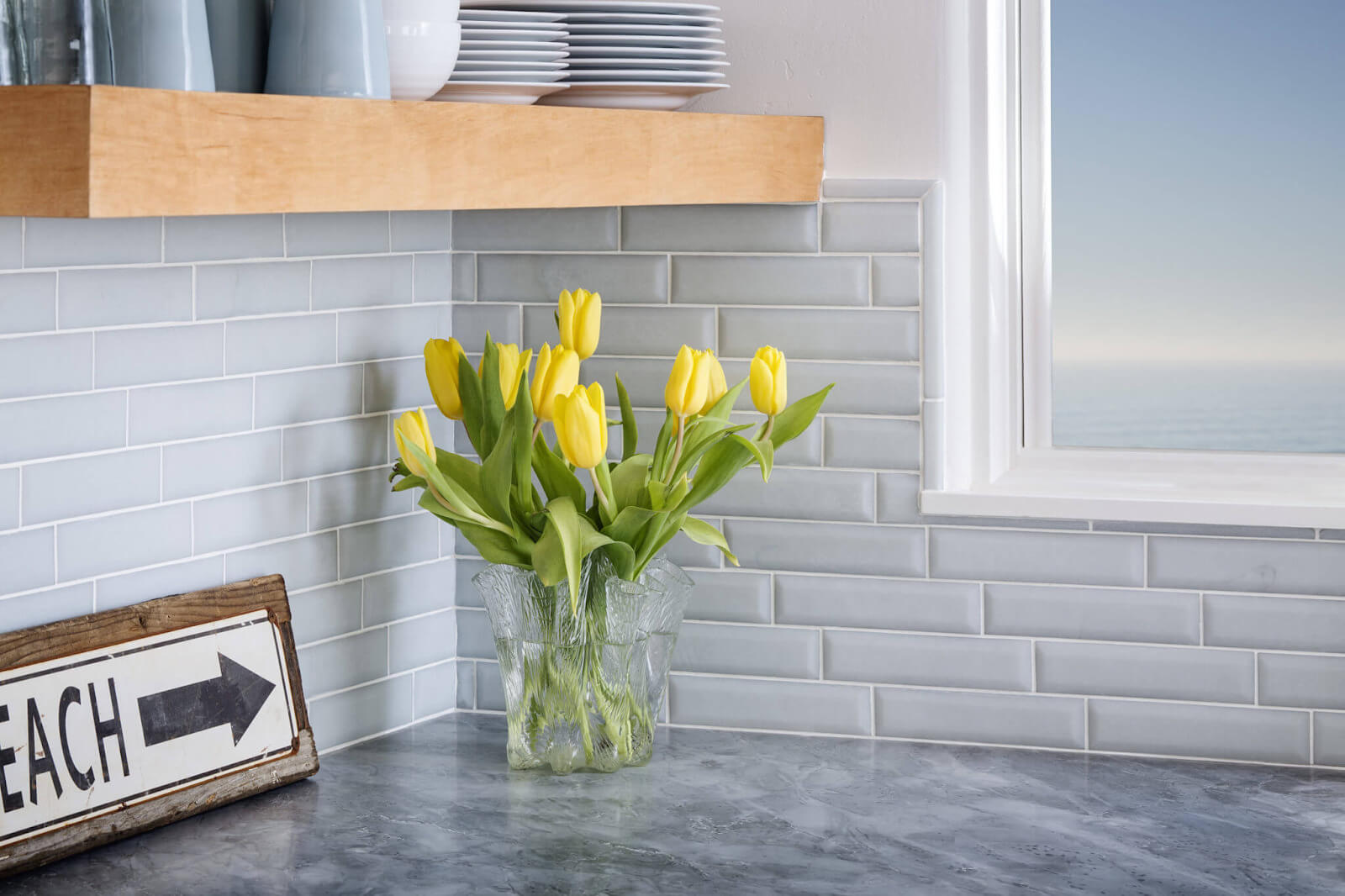
Although over a century old, subway tile continues to find a popular place in both classic and modern decor — and is the perfect addition to a transitional kitchen.
Subway tile is available in a wide variety of colors (including transitional-friendly neutrals). Contemporary options include beveled edges (such as the picture above) that add another element of texture to your space.
Islands with Matte Slab Countertops
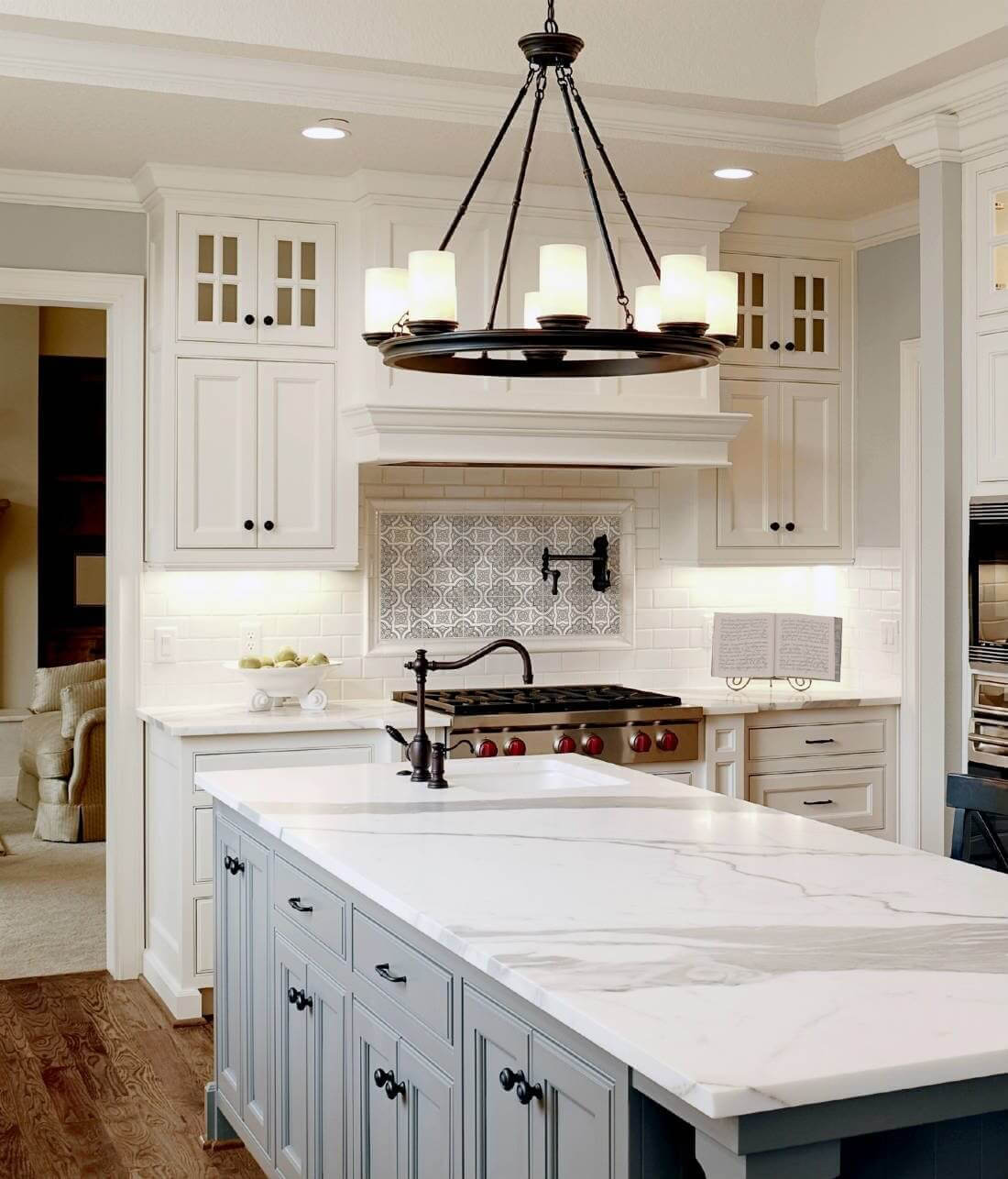
Transitional style offers a modern twist on the islands with marble countertops typically seen in traditional kitchen design.
While traditional countertops can have a glossy finish, transitional kitchens tend to favor matte finishes, and many transitional islands don’t use marble tops at all, but rather marble-look ceramic tile panels/slabs. Ceramic tile is a modern option that offers the look of marble PLUS stain-resistance and a wide selection of colors to choose from.
Ceramic Tile for Transitional Kitchens
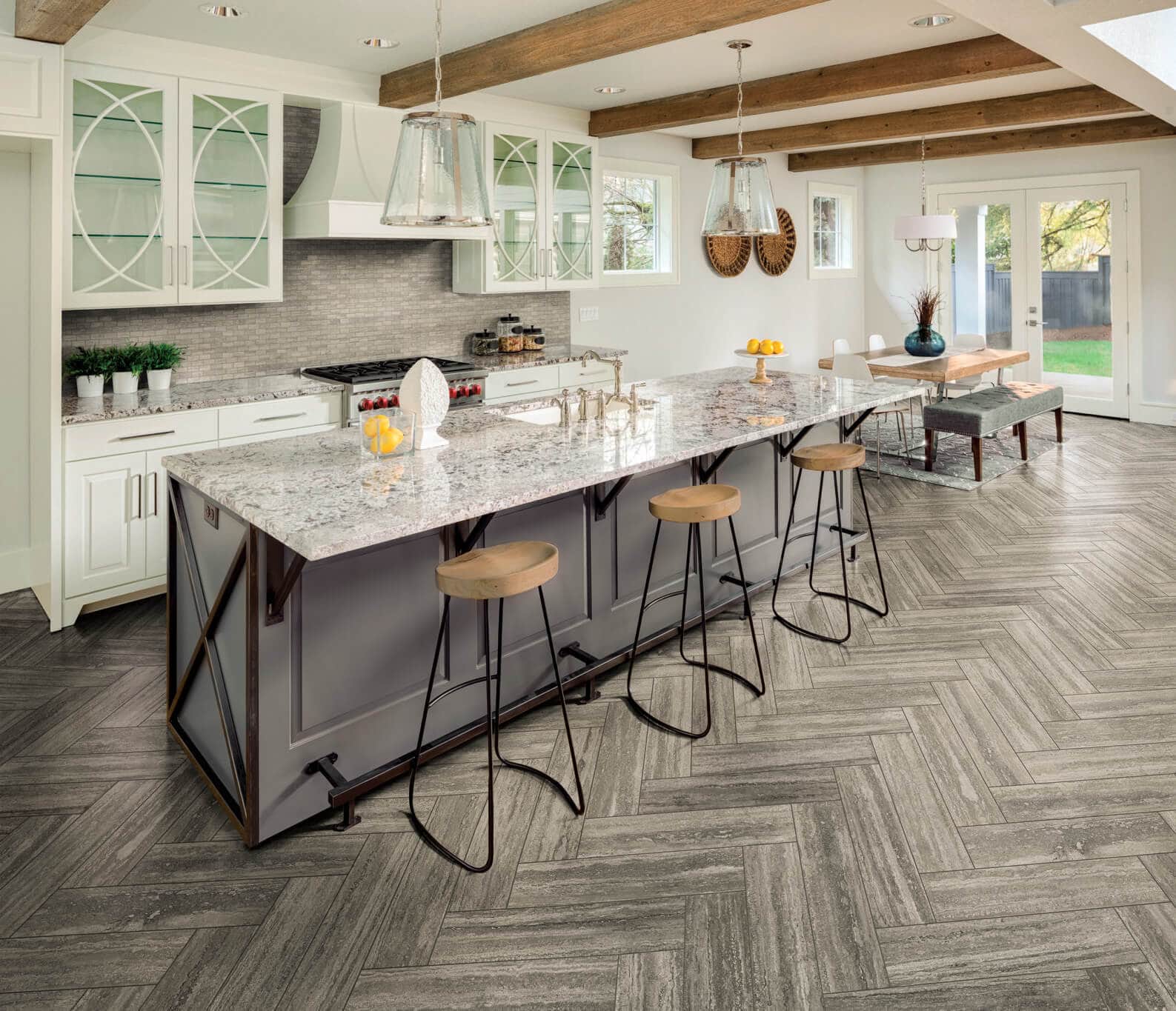
One of the easiest ways to create a transitional kitchen is to utilize ceramic tile. Ceramic tile offers unparalleled design flexibility, so you can find styles in both traditional and contemporary looks, any color, and many different finishes and textures. When you want to include the look of wood, stone, metal, or concrete (and many other materials) in your transitional kitchen, you can find the right ceramic tile to achieve your decor vision.
Ceramic tile’s durability and many benefits mean you won’t have to worry about troublesome maintenance or replacing your tile anytime soon — remember, transitional design is timeless and is perfect for bridging fast-fading trends. Ceramic tile is suitable for any of your kitchen surfaces and has water-, fire-, stain-, scratch-, and bacteria-resistance for your kitchen flooring, counters, backsplash, and walls.
What’s more, ceramic tile is both a traditional and a modern material at the same time — it has been around for thousands of years, yet advances in manufacturing technologies allow new designs to be created every day.
Begin the “transition” to your new transitional kitchen with a visit to our Design Gallery and then explore our Kitchen Tile and Transitional Kitchens Pinterest boards for more inspiration!


